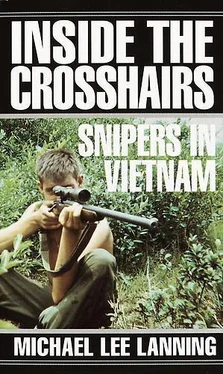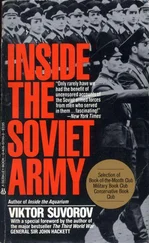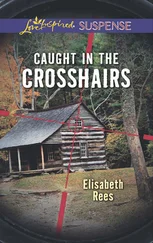The debate over bows versus crossbows continued until another advance in military weaponry—based on old technology—made them both obsolete. As early as 500 B.C. armies had been using flaming petroleum-based weapons, known as “Greek fire,” by launching the incendiaries with catapults or pouring them from defensive walls. Not until sixteen centuries later, however, did anyone attempt to record the procedures for manufacturing such armaments. A late-twelfth-century manuscript attributed to Marcus Graecus, and titled Liber Ignium ad Comburendos Hostes (The Book of Fires for Consuming the Enemy) , contains recipes for explosive mixtures of various strengths. Graecus even notes that the mixtures might be loaded into “small tubes” that, when fired, would “rise into the air with a great whining noise.”
These early propulsion formulas recorded by Graecus provided little more than entertainment initially. History reveals little about the origins of the chemical mixture of potassium nitrate (saltpeter), wood charcoal, and sulfur that eventually became gunpowder. There is evidence that Roger Bacon, Fellow of Merton College, England, successfully mixed the elements into gunpowder early in the thirteenth century. Spanish inventors must have discovered the correct ingredients at about the same time, for they employed primitive cannons during their defense of Seville in 1247.
Despite this evidence, some historians credit German monk Berthold Schwartz for the invention of gunpowder, citing a drawing in Buchsenmeisterey-Schul (School of the Art of Gunnery) by Joseph Furtenbach published in Augsburg in 1643. The picture shows a monk, surrounded by laboratory instruments, creating a small explosion in a crucible. Above the drawing is an inscription. “Portrait of the Venerable and Ingenious Reverend Father called Berthold Schwartz, of the Franciscan order; Doctor, alchemist, and Inventor of the Noble Art of Gunnery in the year 1380.” More words below the image explain, “See here what time and nature have brought today through ingenious men: the art of shooting in guns has been born, created out of nature of fire and vapors of nature.”
Despite Furtenbach’s claims, there is ample evidence that by 1250 the Europeans and the Chinese already knew about the explosiveness of gunpowder. While its discoverer would remain unknown, the destructive power of gunpowder and its influence on the battlefield would dominate all future history.
Apparently the Chinese were satisfied for another century or so to use gunpowder merely for the manufacture of fireworks for use on ceremonial occasions. Europeans, however, recognized its military capabilities and began developing iron tubes that would fire a projectile with the explosive powder. The English began referring to these weapons as “guns,” a word apparently derived from the Teutonic words of gunhilde and gundeline , both meaning “war.” By 1340 references to “gonne,” “gounne,” and “gunne” appeared in English documents. The expenditure accounts of Edward III for February 1, 1345, list payment for the repair and transport of “13 guns with pellets.”
By the end of the fourteenth century most European armies had crude cannons in their inventories, the majority of which were dedicated to defense of fortifications. Early handguns appeared at the same time and consisted of short iron or brass tubes less than one foot long with a bore of less than a quarter inch. Shooters poured powder into the tube’s open end and tamped a metal or stone shot into the closed base. A “touch hole” allowed the firer to ignite the powder with a coal. These “hand cannons” were extremely difficult to aim and became even more so with repeated firing because the barrel became hot.
Innovators added wooden stocks to control the metal barrels and protect the firer from the weapon’s heat. Advances in powder production, particularly the combining of the ingredients into tiny pellets or “corns,” provided a quicker firing, more uniform explosive propellent. Touch holes were replaced by a pan to hold a bit of powder to ease ignition of the main charge. Tightly twisted rags soaked in saltpeter to enable them to smolder for long periods replaced coals as igniters. A serpentine device to hold the smoldering “match” could be lowered by hand, and later by a trigger, to touch the pan and fire the weapon. These “matchlocks” allowed the gunner to look at his target and aim his weapon with some degree of accuracy.
By the beginning of the sixteenth century stocks had been shortened and curved to allow better aiming. These weapons, the early ancestors of modern sniper rifles, became known as “hackbuts” in German-speaking areas but more commonly in other areas as “arquebuses,” from the French word meaning “hookgun.” Arquebuses weighed approximately ten to fifteen pounds and fired a one-ounce ball about three-quarters of an inch in diameter (.75 caliber). With a muzzle velocity of approximately 800 feet per second, these early weapons had a range of 100 to 200 meters. Arquebuses were not without limitations. In rainy, or even damp, weather, the powder would not ignite. Even under perfect conditions a well-trained soldier could manage only two shots every three minutes or so.
Military leaders throughout Europe and Asia Minor began integrating arquebuses into their armies, but the new weapon did not play a major role in a battle until the late fifteenth century. In 1498, Spaniard Fernandez Gonzalo de Cordoba armed some of his men with heavy, shoulder-fired, support-braced arquebuses and integrated them into his ranks of pike-carrying infantry.
In 1503, Cordoba moved his army of 6,000 into Italy to meet an invasion from France. On the afternoon of April 28 the Spanish commander established a defensive position in a hillside vineyard near Cerignola. The Spaniards barely had time to dig shallow trenches before the French force of 10,000 charged their positions. Rank after rank of French infantrymen fell to the arquebuses; the few Frenchmen who reached the trenches died on the points of Spanish pikes. A short time later the French charged for a second time, but again the Spanish held firm. No battlefield would ever be the same again.
On December 29 of the same year, Cordoba crossed the Italian Garigliano River and attacked another French force. The arquebuses and pikes proved as lethal on the offense as they had on the defense and secured victory for the Spanish.
Despite Cordoba’s success, crossbows remained the primary infantry weapon in the French army until 1566. The English did not totally adopt firearms until 1596, and the Turks did not replace their archers for another decade after that. But from the time of Cordoba, armies began to increase the number of firearms they employed, and warfare, long characterized by the arrow, the sword, and the pike, became dominated by gunpowder and shot.
Firearms also began to replace bow- or crossbow-launched arrows as the primary civilian hunting weapons. They became even more dominant in hunting and target competitions with the fifteenth-century discovery, attributed to either Gaspard Kollner of Vienna or Augustus Kotter of Nuremberg, that adding grooves to a barrel’s interior made the bullet spin rapidly in flight and stabilized its path. This “rifling” gave its name to the more accurate weapons it produced, and rifle marksmanship that would ultimately lead to modern sniping began.
Shooting contests, both for sport and for the maintenance of marksmanship proficiency, rose in popularity with the advances in firearms. Early in the fifteenth century the Holy Roman Empire encouraged the formation of shooting clubs in order to maintain a reserve of marksmen in the event of an invasion by the Turks.
The earliest known, documented, club dedicated to the shooting of firearms began in Lucerne in 1466. Members used their own weapons but the club provided powder and shot for the weekly Sunday competitions. Targets were set at a maximum range of about 100 meters, and the winner of each match judged the results of the next.
Читать дальше












